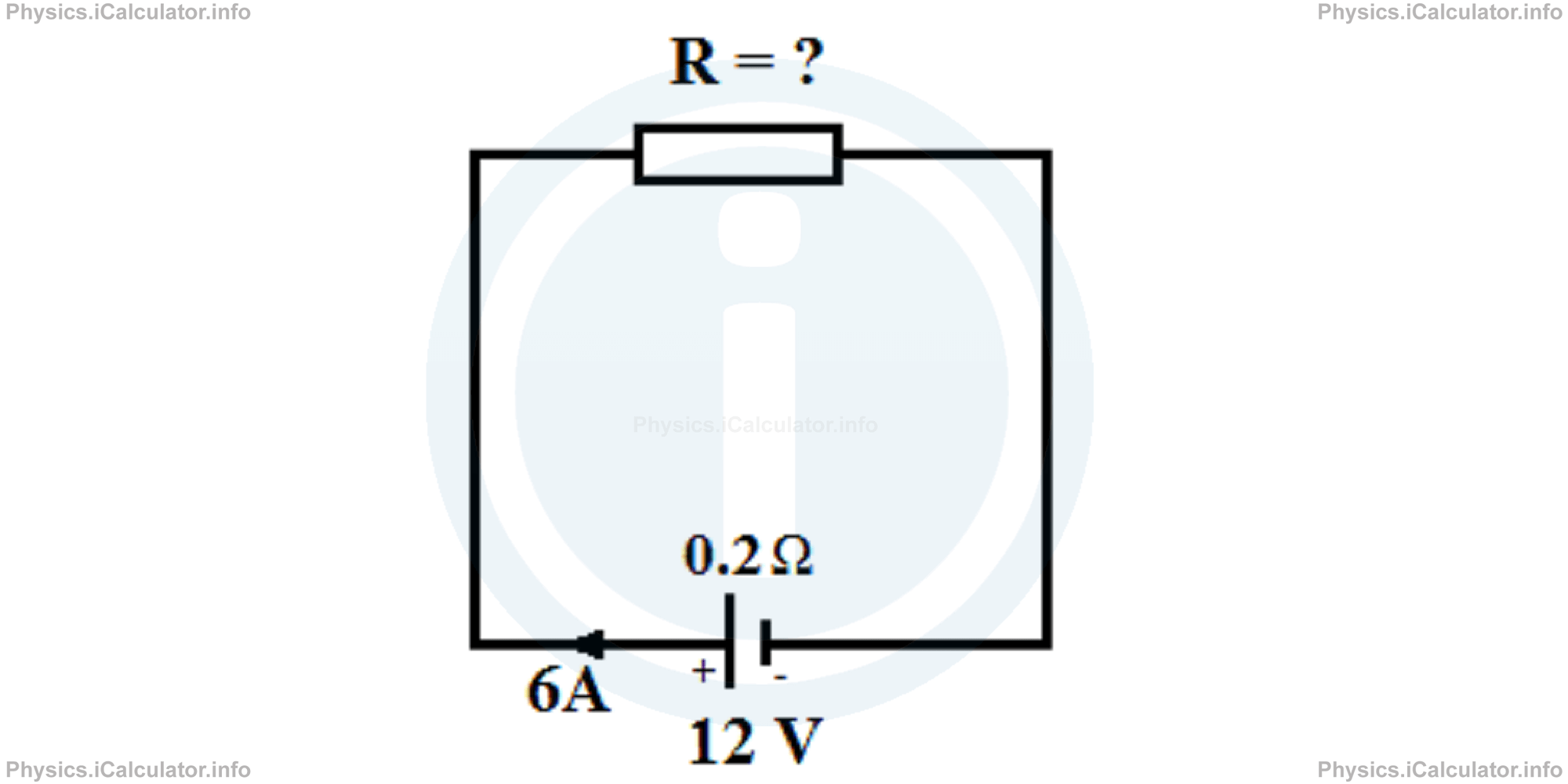Menu
Electric Potential Difference (Voltage). Ohm's Law
Please provide a rating, it takes seconds and helps us to keep this resource free for all to use
The following physics revision questions are provided in support of the physics tutorial on Electric Potential Difference (Voltage). Ohm's Law. In addition to this tutorial, we also provide revision notes, a video tutorial, revision questions on this page (which allow you to check your understanding of the topic) and calculators which provide full, step by step calculations for each of the formula in the Electric Potential Difference (Voltage). Ohm's Law tutorials. The Electric Potential Difference (Voltage). Ohm's Law calculators are particularly useful for ensuring your step-by-step calculations are correct as well as ensuring your final result is accurate.
Not sure on some or part of the Electric Potential Difference (Voltage). Ohm's Law questions? Review the tutorials and learning material for Electric Potential Difference (Voltage). Ohm's Law
| Tutorial ID | Title | Tutorial | Video Tutorial | Revision Notes | Revision Questions | |
|---|---|---|---|---|---|---|
| 15.3 | Electric Potential Difference (Voltage). Ohm's Law |
Electric Potential Difference (Voltage). Ohm's Law Revision Questions
1. 70 % of electric energy produced by a 12 V battery is converted into heat energy in a resistor. What is the resistance of the resistor if 28 C of charge flow through the circuit in 7 seconds?
- 2.1 Ω
- 3.0 Ω
- 4.0 Ω
- 48.0 Ω
Correct Answer: A
2. A positive test charge is brought from R1 = 6 m to R2 = 2 m away from a point charge that produces an electric field around it. What is the magnitude of charge if the potential difference between the two given points is 3000 V? Take k = 9 × 109 N ∙ m2 / C2.
- 27 μC
- 9 μC
- 3 μC
- 1 μC
Correct Answer: D
3. The current flowing through a circuit supplied by a 12 V battery is 6A and the internal resistance is 0.2 Ω. What is the resistance R of the resistor? Neglect the resistance of the wire.

- 2 Ω
- 1.8 Ω
- 2.2 Ω
- 0.4 Ω
Correct Answer: B
Whats next?
Enjoy the "Electric Potential Difference (Voltage). Ohm's Law" practice questions? People who liked the "Electric Potential Difference (Voltage). Ohm's Law" practice questions found the following resources useful:
- Practice Questions Feedback. Helps other - Leave a rating for this practice questions (see below)
- Electrodynamics Physics tutorial: Electric Potential Difference (Voltage). Ohm's Law. Read the Electric Potential Difference (Voltage). Ohm's Law physics tutorial and build your physics knowledge of Electrodynamics
- Electrodynamics Revision Notes: Electric Potential Difference (Voltage). Ohm's Law. Print the notes so you can revise the key points covered in the physics tutorial for Electric Potential Difference (Voltage). Ohm's Law
- Check your calculations for Electrodynamics questions with our excellent Electrodynamics calculators which contain full equations and calculations clearly displayed line by line. See the Electrodynamics Calculators by iCalculator™ below.
- Continuing learning electrodynamics - read our next physics tutorial: Electric Circuits. Series and Parallel Circuits. Short Circuits
Help others Learning Physics just like you
Please provide a rating, it takes seconds and helps us to keep this resource free for all to use
We hope you found this Physics tutorial "Electric Potential Difference (Voltage). Ohm's Law" useful. If you did it would be great if you could spare the time to rate this physics tutorial (simply click on the number of stars that match your assessment of this physics learning aide) and/or share on social media, this helps us identify popular tutorials and calculators and expand our free learning resources to support our users around the world have free access to expand their knowledge of physics and other disciplines.
Electrodynamics Calculators by iCalculator™
- Amount Of Substance Obtained Through Electrolysis Calculator
- Charge Density Calculator
- Electric Charge Stored In A Rc Circuit Calculator
- Electric Field In Terms Of Gauss Law Calculator
- Electric Power And Efficiency Calculator
- Electron Drift Velocity Calculator
- Equivalent Resistance Calculator
- Force Produced By An Electric Source Calculator
- Joules Law Calculator
- Ohms Law Calculator
- Potential Difference In Rc Circuit Calculator
- Resistance Due To Temperature Calculator
- Resistance Of A Conducting Wire Calculator